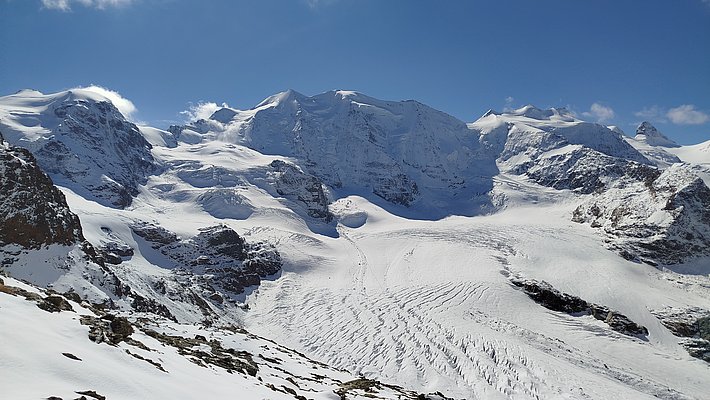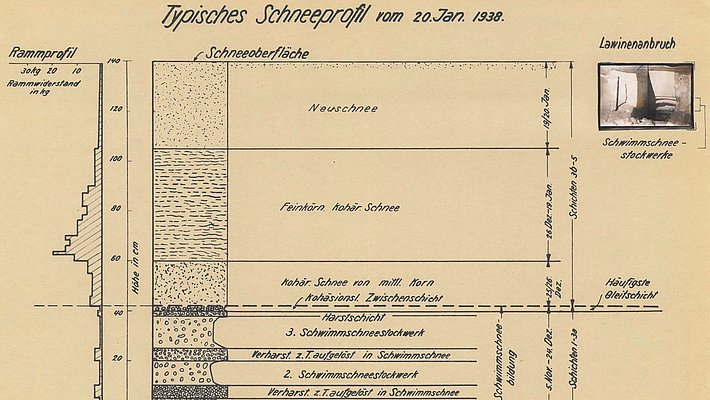Avalanches are a fascinating, but above all else, a supremely dangerous phenomenon. We are therefore researching how they form and travel and how we can optimally protect ourselves. By issuing avalanche warnings for the Swiss Alps, we perform an important national service.
Nowadays, we have a good understanding of how avalanches form. This enables us to publish reliable avalanche bulletins for the benefit of safety officers in ski resorts and local authorities, as well as backcountry skiers, freeriders and snowshoe hikers.
However, we cannot yet predict in detail exactly why, when and where an avalanche will be triggered. We conduct laboratory and field research into how weak layers are generated in the snowpack, how fractures form and propagate in them and how the snowpack eventually begins to slide – in other words, how avalanches form and release.
Complex physical processes are at work inside an avalanche. To be able to accurately assess the scale and destructiveness of avalanches, we have to understand these processes. We therefore need to be able to see inside avalanches. Our Vallée de la Sionne avalanche test site at Arbaz in the canton of Valais has been operating since 1997. The only facility of its kind in the world, it has technical equipment that allows us to gain just this kind of insight. The data collected helps us, among other things, to develop and improve avalanche simulation programs, which are used by engineers worldwide to assess hazards and design protection measures.
Villages and roads can be protected from avalanches in a variety of ways. Refraining from building in vulnerable areas, preventing avalanche formation by planting forestry or erecting barriers, minimising avalanche impact by means of protective structures such as snow sheds, and artificially triggering avalanches using explosives before too much snow has accumulated are just a few of the possibilities. We investigate how these different approaches work and how they can best be combined, including from an economic and legal perspective.
Last but not least, we also examine avalanche accidents involving snow sports enthusiasts in open terrain, to learn lessons for future prevention.







